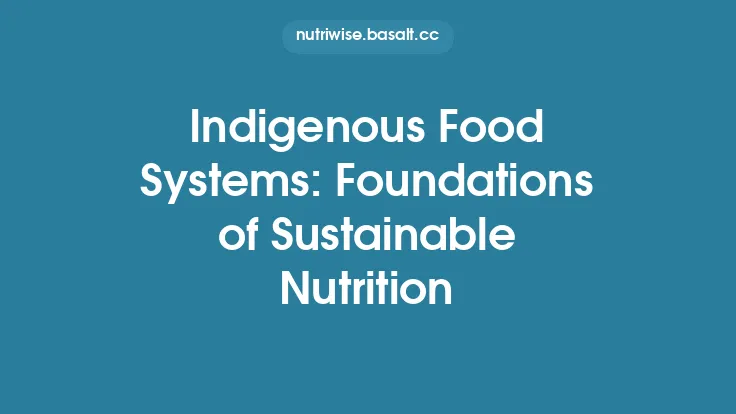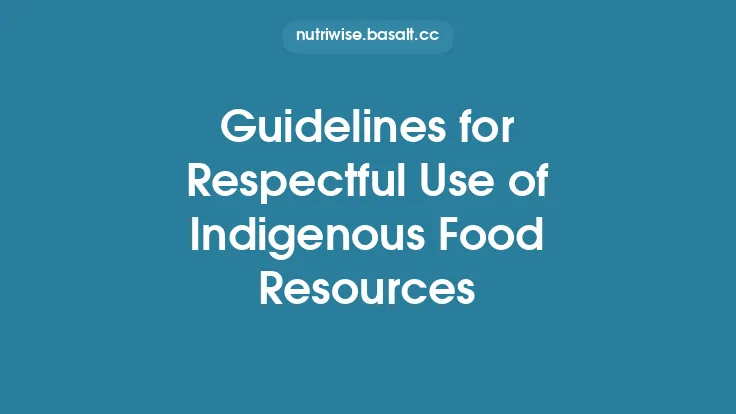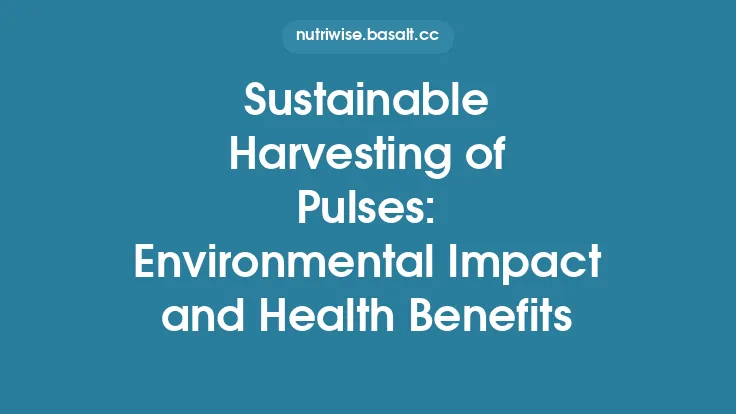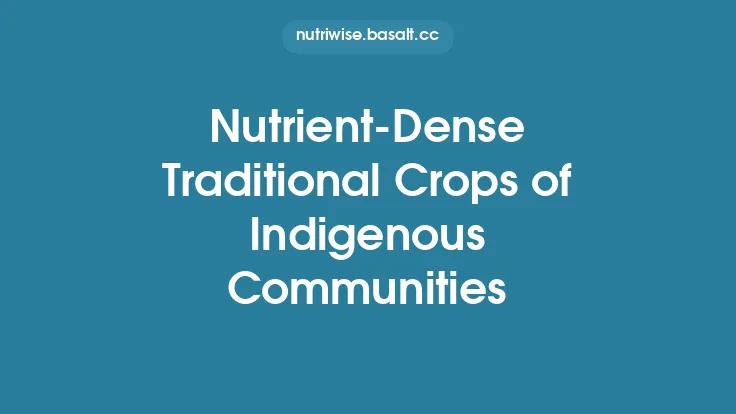The ability to secure food throughout the year, regardless of seasonal fluctuations, has been a cornerstone of many Indigenous food systems. Long before modern refrigeration or global supply chains, Indigenous peoples developed sophisticated strategies that allowed them to harvest, preserve, and manage resources in ways that decoupled food availability from the calendar. These practices are rooted in deep ecological knowledge, communal stewardship, and a flexible relationship with the land that emphasizes resilience over short‑term abundance. Understanding these season‑independent harvesting methods offers valuable insights into sustainable resource management and highlights the ingenuity embedded in Indigenous cultural traditions.
Historical Context and Rationale
Indigenous societies across diverse biomes—whether the boreal forests of the Sami, the temperate rainforests of the Pacific Northwest, the arid highlands of the Andes, or the tropical savannas of the Maasai—faced the challenge of seasonal scarcity. Rather than relying solely on the immediate bounty of a single harvest, they cultivated a portfolio of strategies designed to smooth out the temporal gaps in food supply. This portfolio was shaped by:
- Climatic variability – unpredictable weather patterns, early frosts, or droughts could jeopardize a single‑season harvest.
- Mobility and settlement patterns – nomadic or semi‑nomadic groups needed portable food stores, while sedentary communities required long‑term reserves.
- Cultural imperatives – many Indigenous worldviews stress the responsibility to future generations, prompting the development of practices that safeguard resources over multiple years.
These drivers fostered a cultural emphasis on *temporal diversification*—the intentional spreading of harvesting and storage activities across time to mitigate risk.
Traditional Knowledge Systems for Year‑Round Harvesting
Indigenous knowledge (IK) is not a static repository but a dynamic, intergenerational learning system. Core components that enable season‑independent harvesting include:
- Phenological Calendars – Detailed observations of plant and animal life cycles are encoded in oral narratives, songs, and visual symbols. These calendars guide the timing of harvests to maximize yield while preserving reproductive capacity.
- Ecological Mapping – Spatial memory of microhabitats (e.g., frost pockets, sun‑exposed slopes) informs where certain species can be accessed or cultivated outside their typical season.
- Reciprocal Stewardship Protocols – Practices such as “taking only what is needed” and “leaving a portion for regeneration” ensure that resource bases remain viable for future harvests.
- Knowledge Transmission Mechanisms – Apprenticeship, communal feasting, and storytelling embed technical details (e.g., drying angles, storage pit dimensions) within cultural contexts, ensuring continuity.
Techniques for Extending Harvest Seasons
1. Staggered Harvesting and Selective Cutting
Rather than removing an entire stand of a resource at once, many Indigenous groups practice *selective cutting—harvesting only mature individuals while allowing younger ones to mature. For example, the Māori employ tapu* (ritual restriction) periods that dictate when certain forest foods can be collected, effectively spreading the harvest over months.
2. Micro‑climate Manipulation
Creating favorable micro‑climates can shift the phenology of certain plants:
- Sun‑exposed Rock Shelters – In the Southwest United States, Indigenous peoples used south‑facing rock alcoves to dry and store cactus pads, extending their usability into cooler months.
- Snow Insulation – In Arctic regions, burying harvested roots under snow packs preserves them from freeze‑thaw cycles, allowing retrieval throughout winter.
3. Controlled Propagation
Indigenous horticulturalists often cultivated *perennial or semi‑perennial* species in garden plots that produce yields across multiple years:
- Root Crops in Raised Beds – The Quechua of the Andes built *andenes* (terraced fields) with improved drainage, enabling tuber crops like oca to be harvested at staggered intervals.
- Aquaculture Ponds – Some coastal Indigenous groups constructed shallow, seasonally managed fish ponds that sustain fish populations year‑round through regulated water flow and vegetation.
4. Intercropping and Polyculture
Planting complementary species together can lengthen harvest windows:
- Companion Planting – In the Pacific Northwest, the Haida interplanted berry bushes with nitrogen‑fixing legumes, ensuring that when berries were out of season, the legumes provided a harvestable protein source.
- Successional Planting – By sowing fast‑growing annuals after the main crop’s peak, communities create a secondary harvest that fills seasonal gaps.
Storage and Preservation Methods
Effective storage is the linchpin of season‑independent harvesting. Indigenous techniques often combine physical, chemical, and biological processes to maintain edibility and nutritional integrity.
1. Root Cellars and Earth‑Sheltered Stores
*Construction*: Excavated chambers lined with insulating materials (e.g., straw, bark) maintain stable temperatures (0–5 °C) and high humidity (80–90 %).
*Application: The Ojibwe built wiigwaas* (bark-covered pits) for storing wild rice and tubers, allowing retrieval throughout winter.
2. Drying and Dehydration
*Solar Drying Racks*: Angled wooden frames expose sliced plant material to sun and wind, reducing moisture to <10 %.
*Smoke‑Drying: Hanging fish or meat over low‑temperature smoke not only desiccates but also imparts antimicrobial compounds. The Sami’s smoked reindeer meat* can be stored for months.
3. Fermentation and Controlled Decay
Fermentation leverages beneficial microbes to preserve food while enhancing flavor and digestibility. Indigenous groups have long used:
- Lactic Acid Fermentation – Fermenting wild greens in earthen jars creates a sour, shelf‑stable product.
- Alcoholic Fermentation – The Maya’s *balché* (fermented bark) demonstrates how fermentation can extend the utility of otherwise perishable plant parts.
4. Pit and Cache Storage
*Pit Burial: Digging shallow pits, lining them with leaves or bark, and covering with earth creates an anaerobic environment that slows spoilage. The Inuit’s pits* for storing seal meat exemplify this method.
*Cache Systems*: In forested regions, caches hidden under leaf litter protect nuts and seeds from rodents while maintaining cool, dry conditions.
5. Ice and Snow Preservation
In high‑latitude environments, natural ice and snow act as refrigeration. Indigenous peoples pack harvested fish or meat in insulated containers and bury them beneath snow, where temperatures remain below freezing for extended periods.
Controlled Environment Practices
Beyond natural micro‑climates, some Indigenous societies engineered semi‑controlled environments to produce food outside its typical season.
1. Cold Frames and Greenhouses
*Construction*: Simple frames of wood or stone covered with translucent animal skins or later glass.
*Function: These structures trap solar heat, allowing early spring or late autumn cultivation of hardy greens. The Māori’s whare* (house) gardens incorporated such designs for year‑round kumara production.
2. Water Management Systems
*Irrigation Canals*: In the arid Southwest, the Hohokam built extensive canal networks that regulated water flow, enabling multiple planting cycles per year.
*Flood‑Recession Agriculture*: In floodplain societies, timing the planting to recede after seasonal floods provides nutrient‑rich, moist soils for rapid crop cycles.
3. Soil Amendments and Mulching
Applying organic matter (e.g., ash, composted plant material) improves soil structure and moisture retention, allowing crops to survive cooler periods. Mulching with pine needles or dried leaves insulates root zones, extending the growing season for root vegetables.
Community Coordination and Resource Management
Season‑independent harvesting is rarely an individual endeavor; it relies on collective organization:
- Harvest Calendars – Communal calendars, often marked on communal structures or recited during gatherings, allocate specific times and locations for different groups to harvest, preventing overexploitation.
- Shared Storage Facilities – Centralized storage houses (e.g., the *kiva* in Pueblo societies) serve as communal repositories, ensuring equitable access during lean periods.
- Reciprocal Exchange Networks – Trade routes allow surplus from one ecological zone to supplement deficits in another, effectively smoothing seasonal gaps across larger territories.
These social mechanisms embed resilience into the fabric of the community, turning technical practices into cultural norms.
Ethical and Cultural Considerations in Season‑Independent Harvesting
While the technical aspects are crucial, the ethical framework guiding these practices is equally important:
- Respect for Sacred Species – Certain plants or animals hold spiritual significance; their harvest is governed by ritual protocols that may limit frequency or quantity, reinforcing sustainable use.
- Land Tenure and Access Rights – Traditional territories define who may harvest and where, ensuring that resource extraction aligns with communal stewardship responsibilities.
- Intergenerational Equity – The principle of leaving “enough for the next generation” is embedded in many Indigenous narratives, shaping decisions about storage duration and seed preservation.
These cultural dimensions ensure that season‑independent harvesting does not become a purely extractive activity but remains a balanced, reciprocal relationship with the environment.
Contemporary Applications and Revitalization
Modern Indigenous communities are revitalizing traditional season‑independent practices in response to climate change, food insecurity, and cultural resurgence:
- Community‑Run Food Hubs – Projects in the Pacific Northwest have reintroduced root cellar networks, combining traditional designs with modern insulation materials to store locally harvested berries and tubers.
- Hybrid Agroforestry Systems – In the Amazon, Indigenous groups integrate native fruit trees with cultivated crops, creating layered canopies that produce harvests across multiple seasons.
- Digital Knowledge Platforms – Collaborative mapping tools document micro‑climate sites and storage techniques, allowing younger generations to access ancestral knowledge while adapting it to contemporary contexts.
These initiatives demonstrate that ancient practices can be scaled and adapted without losing their cultural integrity.
Challenges and Future Directions
Despite their robustness, season‑independent harvesting systems face several pressures:
- Land Dispossession – Loss of traditional territories limits access to critical micro‑habitats and storage sites.
- Climate Variability – Shifts in temperature and precipitation patterns can disrupt phenological cues that underpin selective harvesting.
- Erosion of Oral Traditions – As younger members migrate to urban centers, the transmission of nuanced storage knowledge may weaken.
Addressing these challenges requires:
- Policy Support – Legal recognition of Indigenous land rights and support for community storage infrastructure.
- Collaborative Research – Partnerships between Indigenous knowledge holders and scientists to document and refine preservation techniques.
- Education Programs – School curricula that incorporate hands‑on training in traditional storage and harvesting methods.
By reinforcing the social, legal, and educational foundations that sustain these practices, Indigenous food systems can continue to provide reliable, season‑independent nourishment for generations to come.





